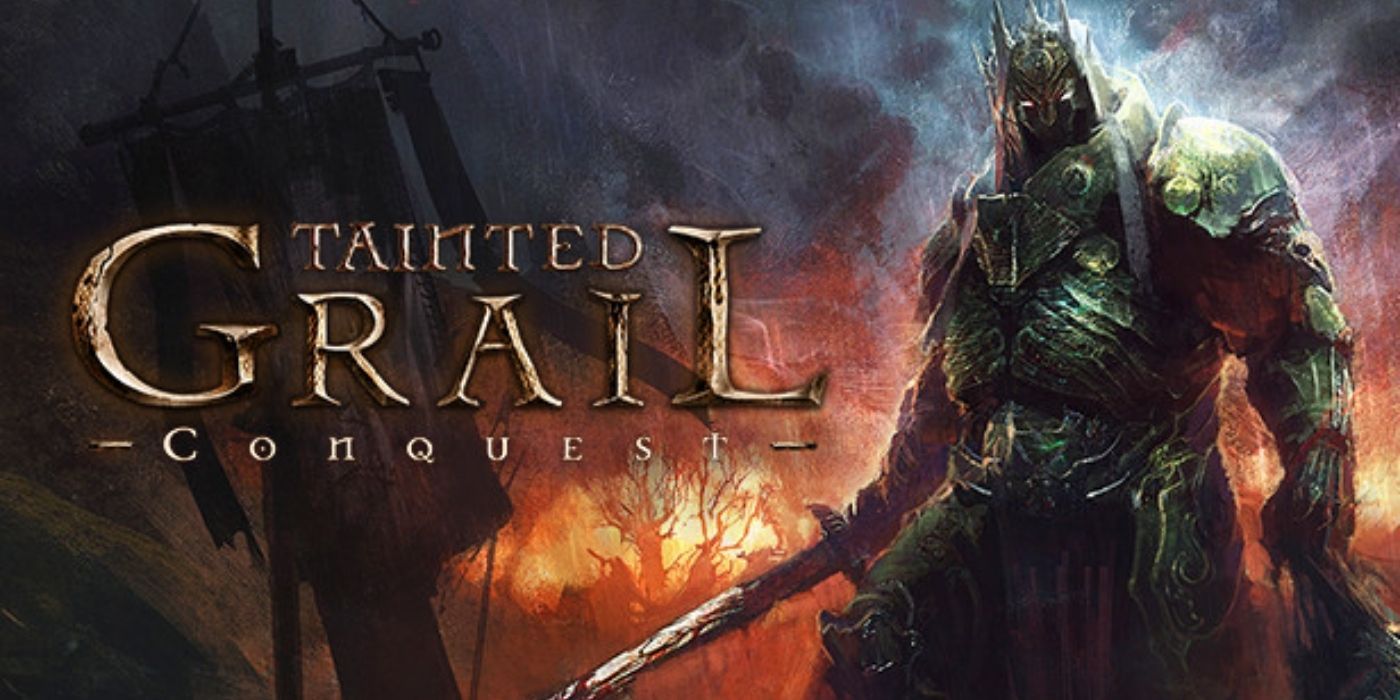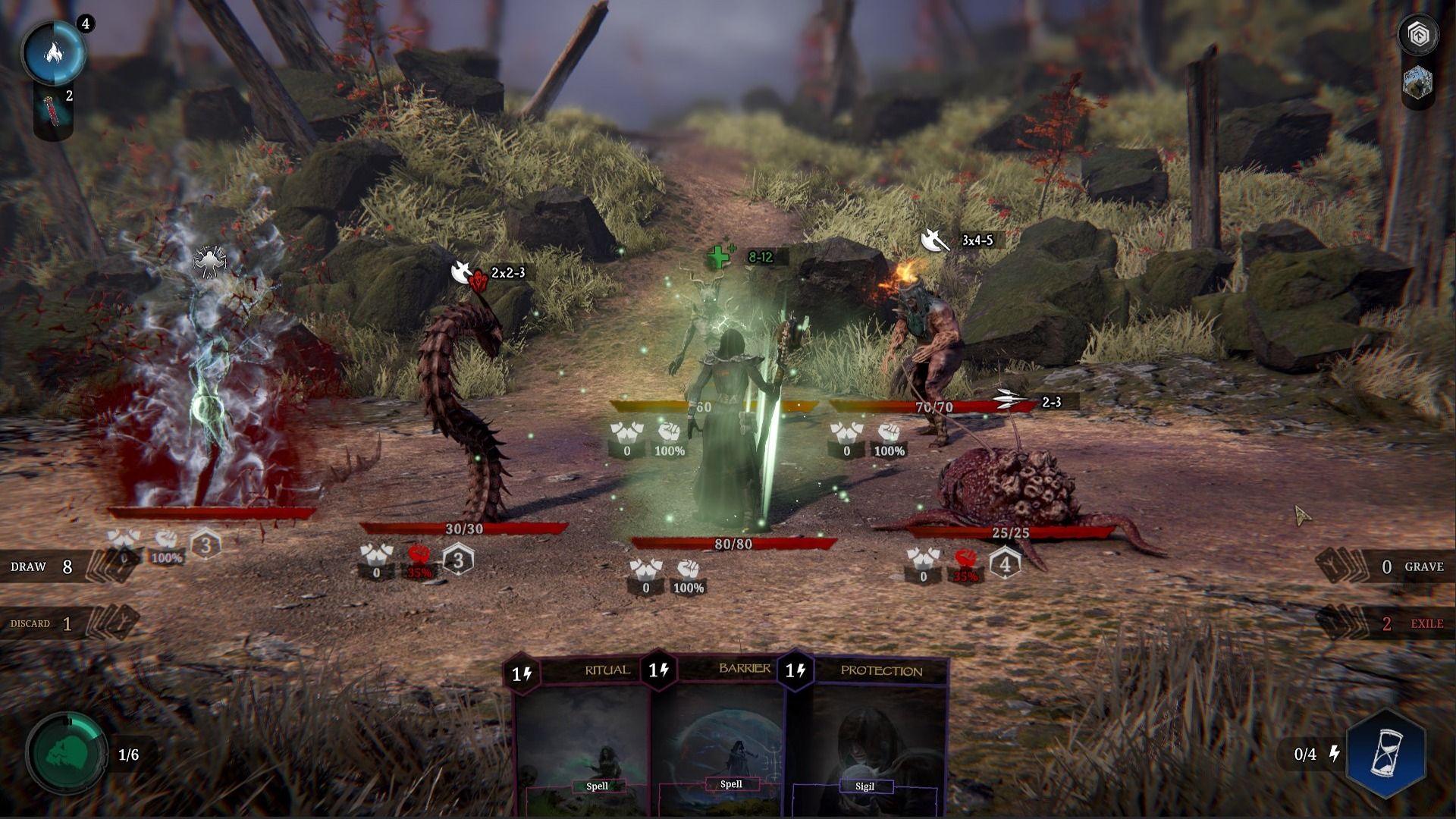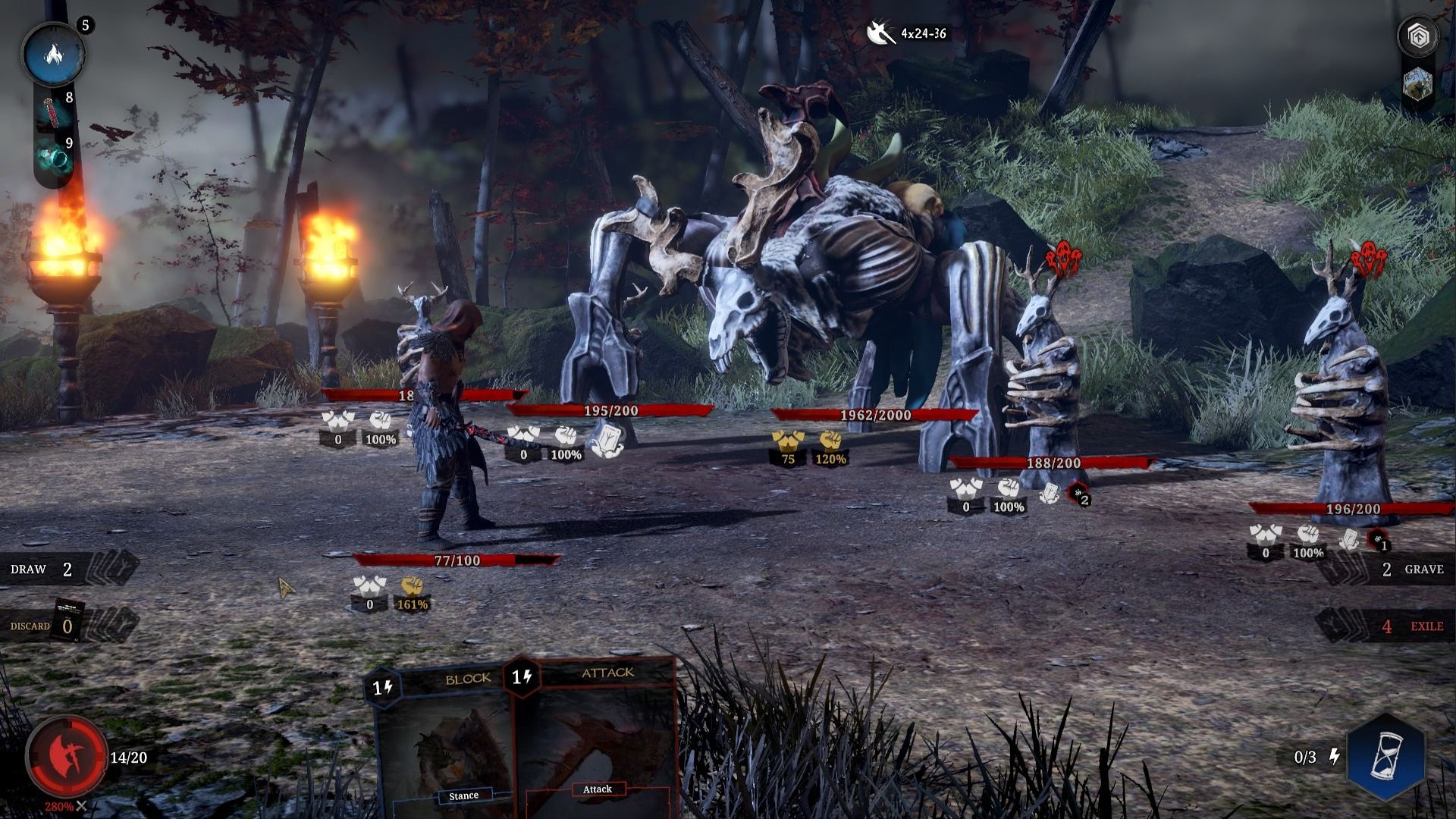Tainted Grail: Conquest is a thrilling take on the rogue-lite deckbuilding genre, and brings the world of the Tainted Grail board game to life. Players find themselves in a broken reality ravaged by the Wyrdness, and in order to fix this, a mysterious creature tells them to hunt down four powerful adversaries. All of this is set to a grimdark Arthurian backdrop that will have players guessing at what is really going on. It mixes together elements of town-building, rouge-lites, deck building, and RPGs to tell its unique narrative.
Fans of Tainted Grail will likely already have an idea of what to expect, but those that haven't played the board game will probably have their first experience with Tainted Grail: Conquest. At its core, this is a deck-building rogue-lite, so players that aren't fans of those genres may want to steer clear. That said, for those dedicated fans that relish in these games, Tainted Grail: Conquest is a great choice. Players may be familiar with this type of gameplay from 2017's incredibly popular Slay The Spire, which practically created a subgenre of its own.
There are currently nine classes to choose between in Tainted Grail: Conquest, but there may be more coming sometime after launch. Each of these classes provides a completely different experience from the others, which encourages replayability. Players will likely want to stick to the class they feel comfortable with, but trying new classes can be extremely rewarding. The nine classes that currently in the game are the Wyrdhunter, Pathfinder, Berserker, Summoner, Necromancer, Blood Mage, Apostate, Sentinel, and Zealot. These classes each have a unique ultimate skill, passive skill, and deck of cards.
For many of these classes, it is fairly easy to parse out what they do. The Berserker is a damage dealer that is very high risk/high reward, the Summoner summons minions to aid in battle, but others are less clear. Wyrdhunters, for example, focus on dealing many hits in order to build up to a powerful attack, and the Pathfinder gets stronger with each turn they avoid taking damage. If there are any complaints to be had about the classes, it's that the three magic classes are all very similar. The Summoner, Necromancer, and Blood Mage all focus on summoning allies to help with the fight, but they do this in different ways. As such, players have to strategize differently for each class.
Once a class is picked, players find themselves in their village, which starts out more like a ghost town. Throughout the player's many different runs, NPCs will be found, rescued, or convinced to come stay at the town, unlocking their services for future runs. The town is relatively small, but it does offer some bonuses that will permanently upgrade the player and make future runs that much more manageable. As can be expected from any rogue-lite game, Tainted Grail: Conquest is not easy.
Difficulty is a hot topic among the gaming community at the moment, with some feeling that easy modes should be included to make the game more accessible and others preferring games to stick with just one default setting. Tainted Grail: Conquest sides with the former group, but does so in an interesting way. Instead of starting the game as normal, players can enter the Scenarios menu and play on easy mode. This will automatically give them a full town, unlock all cards and passive abilities, and tone down the enemies a bit. This is a great way to include more casual players without taking anything away from those that prefer the challenge.
When it comes to the actual gameplay, it should feel familiar to anyone that's played these types of deck-building games. Certain cards deal damage, while others provide blocks that negate incoming hits. The player has armor and damage stats that modify how much damage they deal and receive, and cards are full of keywords that dictate how they work. If that sounds intimidating, it can be at first. Learning a new class takes quite a bit of reading through cards, especially for some of the more complex ones like the spellcasters. Once players understand how their class works, it becomes a matter of optimizing that class by choosing good passive skills and cards.
Every time the player levels up by gaining enough experience, they are offered a choice of three cards. What these cards are is dependent on class, but this is where the real strategy comes into play. Players need to pick cards that synergize well with each other while at the same time avoiding making their deck too large. Getting too many cards will make it impossible to find the ones they need, while not having enough will stunt the player's ability to deal sufficient damage and survive.
Every few levels, players also get access to a new passive ability, and these can really take their character to a whole new level of power. For example, the Berserker's starting passive skill gives him extra energy when he is below half HP, but one of the passive skills he can get from leveling up also duplicates every attack action when below 25% HP. This incentivizes players to take a riskier approach but monumentally increases the amount of damage they can deal in a given round of combat.
In terms of visuals, the game really digs into its grimdark roots. The enemies are often grotesque, and even some of the friendly NPCs the player finds will have the faint of heart feeling squeamish. The graphics are rather impressive but they certainly aren't anything groundbreaking. Sometimes the game can feel too dark to the point where it's difficult to see the mini map in the corner of the screen, but this doesn't take away from the experience too much.
Tainted Grail: Conquest's story is shrouded in mystery, but this is definitely intentional. The player travels to the land of Avalon, but shortly after they arrive, reality fell apart. Now they are in a unique version of reality, working for the aforementioned mysterious creature to try and mend things. During their travels, players will come across a strange cast of characters each with a unique backstory of their own. It always seems to feel like there's more looming underneath the surface, and each interaction with a new NPC uncovers a little of what lies beneath.
All in all, Tainted Grail: Conquest is a great experience with a mysterious narrative, a gripping grimdark setting, and enjoyable deckbuilding rogue-lite mechanics. At times certain minor bugs or lighting issues can hold it back, but these things are trivial compared to the great fun players will have. With some future updates to address these minor issues, Tainted Grail: Conquest is shaping up to be a great entry within this subgenre of games.
Tainted Grail: Conquest is available now on PC. Game Rant was provided a code for this review.



